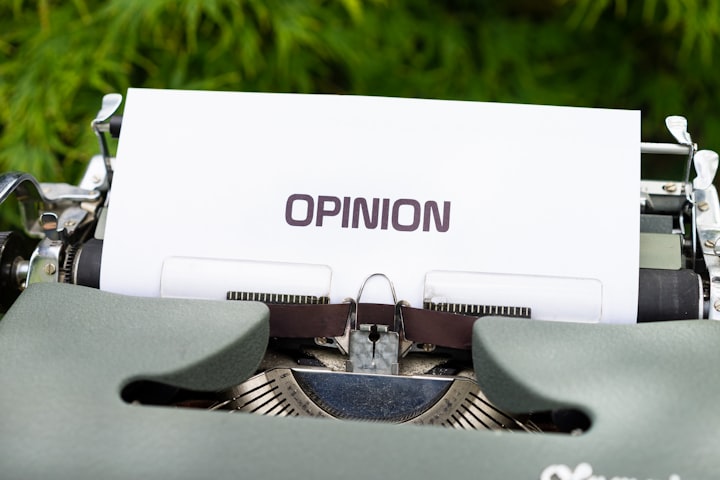Remaking "The Princess Bride" For Real? Is There a Way To Do It?
Well, I Think So...

The Internet had a collective gasp recently when we heard there was going to be a remake of The Princess Bride. While it turned out to be a parody remake made during quarantine for Quibi by a star-studded cast of performers working from home, according to Tor, the conversations surrounding the film got my brain churning.
Could you remake The Princess Bride in such a way that it wouldn't be seen as trying to replace the classic film? Could the remake be more of a sequel, showing that there's a new generation of viewers out there who may want their own version of this timeless tale? I think the answer to those questions is yes, if you're willing to follow me into the fire swamp of "What If...?" for a little while.
And if you'd like to see some of my other film-related articles, I'd highly recommend checking out What is The Monster in "The Ritual"? (A Mythological Head Canon), as well as 5 "The Purge" Movies They Should Make Next. And if you're just looking for more unique pop culture, gaming, and articles about general geekery, make sure you take a look at my full Vocal archive as well!
I Do Not Think It Means What You Think It Means

When someone hears the word "remake" there are particular associations that come along with the term. The first and most obvious is that the film is meant to be an update of the old film, which attempts to fix it in some way, shape, or form. Since there's no glaring flaws with the original that were products of their time, that meaning doesn't apply. As I mentioned above, a lot of the time people see it as attempting to replace the original. Since nothing could ever do that, this proposition won't even try. Instead, for this little thought experiment, we're going to set forth a new film that is both a remake and a sequel to the original film, which could carry on the tradition while presenting a unique version of the classic tale.
That's a bold idea, if you can pull it off. But how are you going to make a film that's in two places at once?
The key to this idea is to remember the framing of the film we're seeing. Because for all the swashbuckling and political duplicity, what we're seeing is the imagination of a little boy home sick from school whose grandfather is reading him the story that's become a family tradition.
Is Fred Savage Available?

As we find out early in the film, this story is a family tradition with a storied history. For roughly half a dozen generations the men of this family have been reading this book to their children and grandchildren when they're sick, and they need to rest so they can get better.
The implication is that the kid in the first film is just the latest in a long line to be inducted into this traditional reading. And though he's initially resistant to what he suspects is a, "kissing book," by the end of the tale he wants to start it over again the next day.
So when that boy grows up and has children of his own, would he not carry on the tradition with them?
This is what allows us to have our cake, and eat it too. Because the original film is the imaginings of a young boy who grew up in the 80s. It has that classic fantasy look, feeling, and tone. But what would those same imaginings look like to a generation of kids who've seen Peter Jackson's Lord of The Rings films? What would they imagine a giant would look like in a world where Halfthor Bjornsson has played Gregor Clegane in Game of Thrones? Even something as simple as the design of the life-sucking machine could be more intricate, more menacing, or more fantastical to reflect the sort of aesthetics of the new listener... and by extension the audience who's more in-tune with their experiences.
Forging a New Narrative
That freedom of a new generation's point of view could give the filmmakers free rein to do things a little differently, while still remaining true to the story. For example, would they show Westley being captured by the Dread Pirate Roberts, and a brief naval battle with the ship Revenge? Perhaps as a nightmare Buttercup has since she never truly learned the fate of her beloved? Would they spend more time with how Buttercup ended up becoming a princess, even if it's just a brief montage?
Additionally, say the new generation of listeners was a daughter instead of a son. What effect would that have on the story? Do our female characters get more agency, perhaps with Buttercup planning to flee rather than kill herself after the wedding, or actively spying on Humperdinck's plans? Mayhap with the Miracle Max working as an equal partner with his wife, whose magic is half of the spell? You might even go so far as to change Westley's gender as a character, making it a love story between two women.
You've been on the Internet, don't pretend that's a new idea.
Whether it's shuffling up the roles to include more performers of color, to introduce additional themes, or to just add some more modern fight choreography and chase scenes to the story, there is potential to make a new, interesting film that in no way attempts to replace or remove the original. They would simply be two versions of the same story, seen through very different lenses by very different generations.
About the Creator
Neal Litherland
Neal Litherland is an author, freelance blogger, and RPG designer. A regular on the Chicago convention circuit, he works in a variety of genres.
Blog: Improved Initiative and The Literary Mercenary






Comments
There are no comments for this story
Be the first to respond and start the conversation.